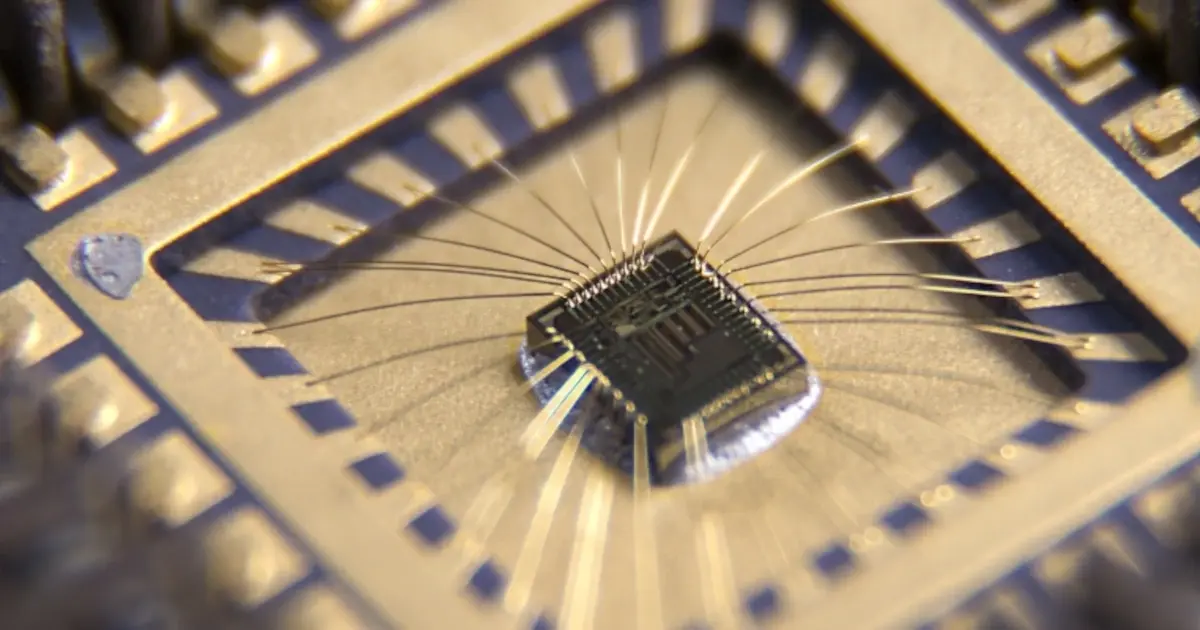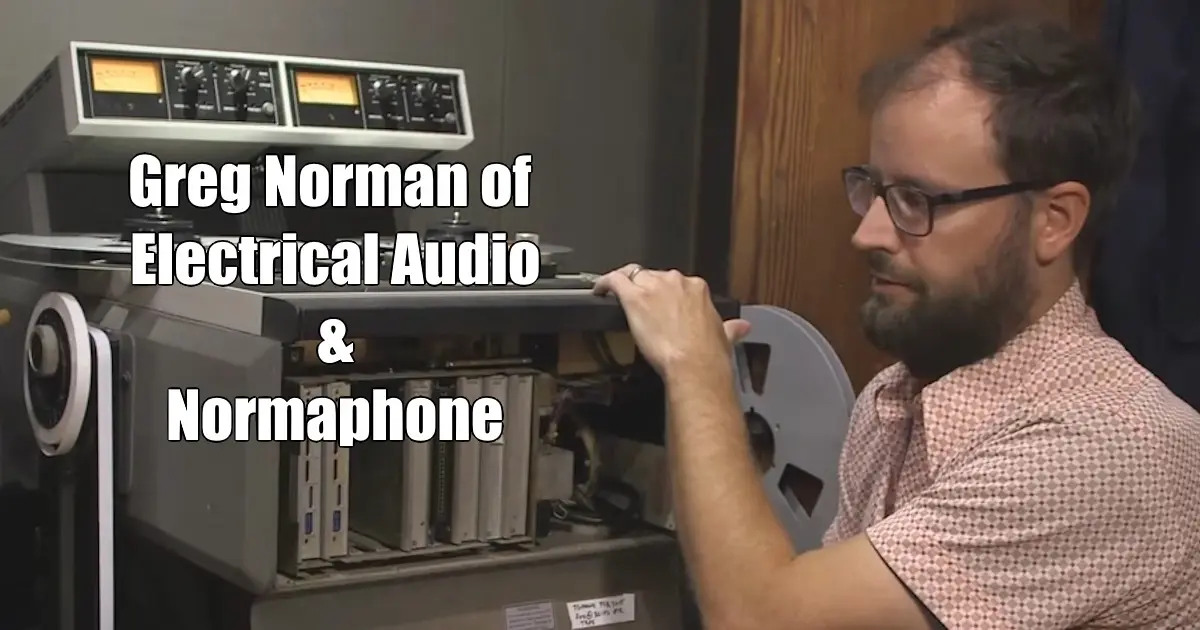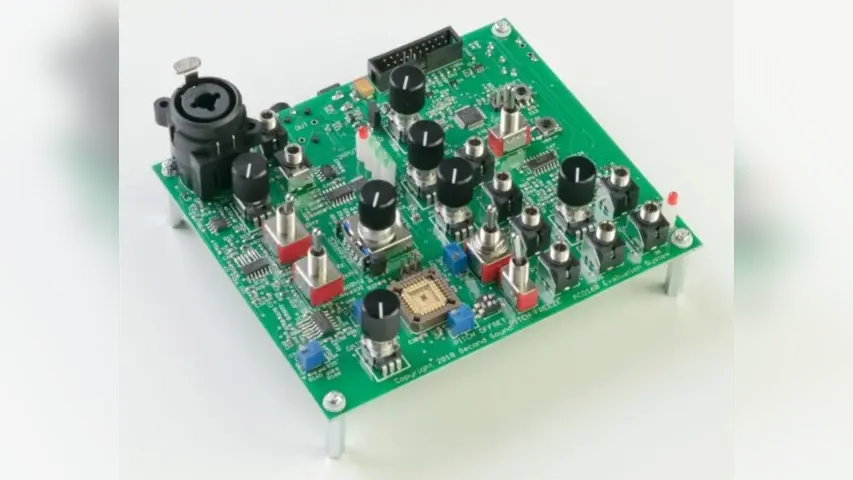
Related Topics
Recording Studio Problem Solving
Parker and Stephen have a great talk with Greg Norman, a recording engineer, producer, and technician at Steve Albini’s studio, Electrical Audio.
PoE - Phantom over Ethernet
Parker and Stephen discuss the Cloudlifter mechanism in use to help enhance the sound of this podcast, what phantom power is and what it actually does.
Other Resources
Circuit Break Podcast
Webinars
Videos
Tour MacroFab's ITAR-Compliant Facility
January 22, 2020, Episode #208
Brian Kaczhnski
- Brian earned his Masters of Science in Electrical Engineering from Stanford University in 2001
- Has worked since 1999 as a mixed-signal/RF ASIC designer focusing mainly on LAN applications such as Wi-Fi, Bluetooth, USB, etc
- His passion for music and desire to bridge the gap between acoustic/electric instruments and music synthesizers (both analog and digital) inspire his current work
- Why the name Second Sound?
- It sounds cool and refers to a quantum mechanical phenomenon
- How many employees?
- ACO100 and ACO160 ICs
- What is an audio controlled oscillator?
- Frequency detection
- ACO160 vs ACO100
- Moving from custom Ic to Firmware solution?
- What drove this decision?
- How does this differ from the hardware solution?
- Will you be offering the ACO100 IC?
- Development Boards
- What is an audio controlled oscillator?
- Integrated Circuit creation
- How did you go about designing these chips?
- Software?
- Required Files?
- What was your process of getting them manufactured?
- Tips and tricks for people wanting to manufacture Ics?
- Challenges and what to avoid?
- How did you go about designing these chips?
- What changed to enable going from a chip design to a MCU firmware based design?
About the Hosts

Parker Dillmann
Parker is an Electrical Engineer with backgrounds in Embedded System Design and Digital Signal Processing. He got his start in 2005 by hacking Nintendo consoles into portable gaming units. The following year he designed and produced an Atari 2600 video mod to allow the Atari to display a crisp, RF fuzz free picture on newer TVs. Over a thousand Atari video mods where produced by Parker from 2006 to 2011 and the mod is still made by other enthusiasts in the Atari community.
In 2006, Parker enrolled at The University of Texas at Austin as a Petroleum Engineer. After realizing electronics was his passion he switched majors in 2007 to Electrical and Computer Engineering. Following his previous background in making the Atari 2600 video mod, Parker decided to take more board layout classes and circuit design classes. Other areas of study include robotics, microcontroller theory and design, FPGA development with VHDL and Verilog, and image and signal processing with DSPs. In 2010, Parker won a Ti sponsored Launchpad programming and design contest that was held by the IEEE CS chapter at the University. Parker graduated with a BS in Electrical and Computer Engineering in the Spring of 2012.
In the Summer of 2012, Parker was hired on as an Electrical Engineer at Dynamic Perception to design and prototype new electronic products. Here, Parker learned about full product development cycles and honed his board layout skills. Seeing the difficulties in managing operations and FCC/CE compliance testing, Parker thought there had to be a better way for small electronic companies to get their product out in customer's hands.
Parker also runs the blog, longhornengineer.com, where he posts his personal projects, technical guides, and appnotes about board layout design and components.

Stephen Kraig
Stephen Kraig is a component engineer working in the aerospace industry. He has applied his electrical engineering knowledge in a variety of contexts previously, including oil and gas, contract manufacturing, audio electronic repair, and synthesizer design. A graduate of Texas A&M, Stephen has lived his adult life in the Houston, TX, and Denver, CO, areas.
Stephen has never said no to a project. From building guitar amps (starting when he was 17) to designing and building his own CNC table to fine-tuning the mineral composition of the water he uses to brew beer, he thrives on testing, experimentation, and problem-solving. Tune into the podcast to learn more about the wacky stuff Stephen gets up to.
Special thanks to whixr over at Tymkrs for the intro and outro!
Related Podcasts

PoE - Phantom over Ethernet
Parker and Stephen discuss the Cloudlifter mechanism in use to help enhance the sound of this podcast, what phantom power is and what it actually does.

Recording Studio Problem Solving
Parker and Stephen have a great talk with Greg Norman, a recording engineer, producer, and technician at Steve Albini’s studio, Electrical Audio.
About MacroFab
MacroFab offers comprehensive manufacturing solutions, from your smallest prototyping orders to your largest production needs. Our factory network locations are strategically located across North America, ensuring that we have the flexibility to provide capacity when and where you need it most.
Experience the future of EMS manufacturing with our state-of-the-art technology platform and cutting-edge digital supply chain solutions. At MacroFab, we ensure that your electronics are produced faster, more efficiently, and with fewer logistic problems than ever before.
Take advantage of AI-enabled sourcing opportunities and employ expert teams who are connected through a user-friendly technology platform. Discover how streamlined electronics manufacturing can benefit your business by contacting us today.

